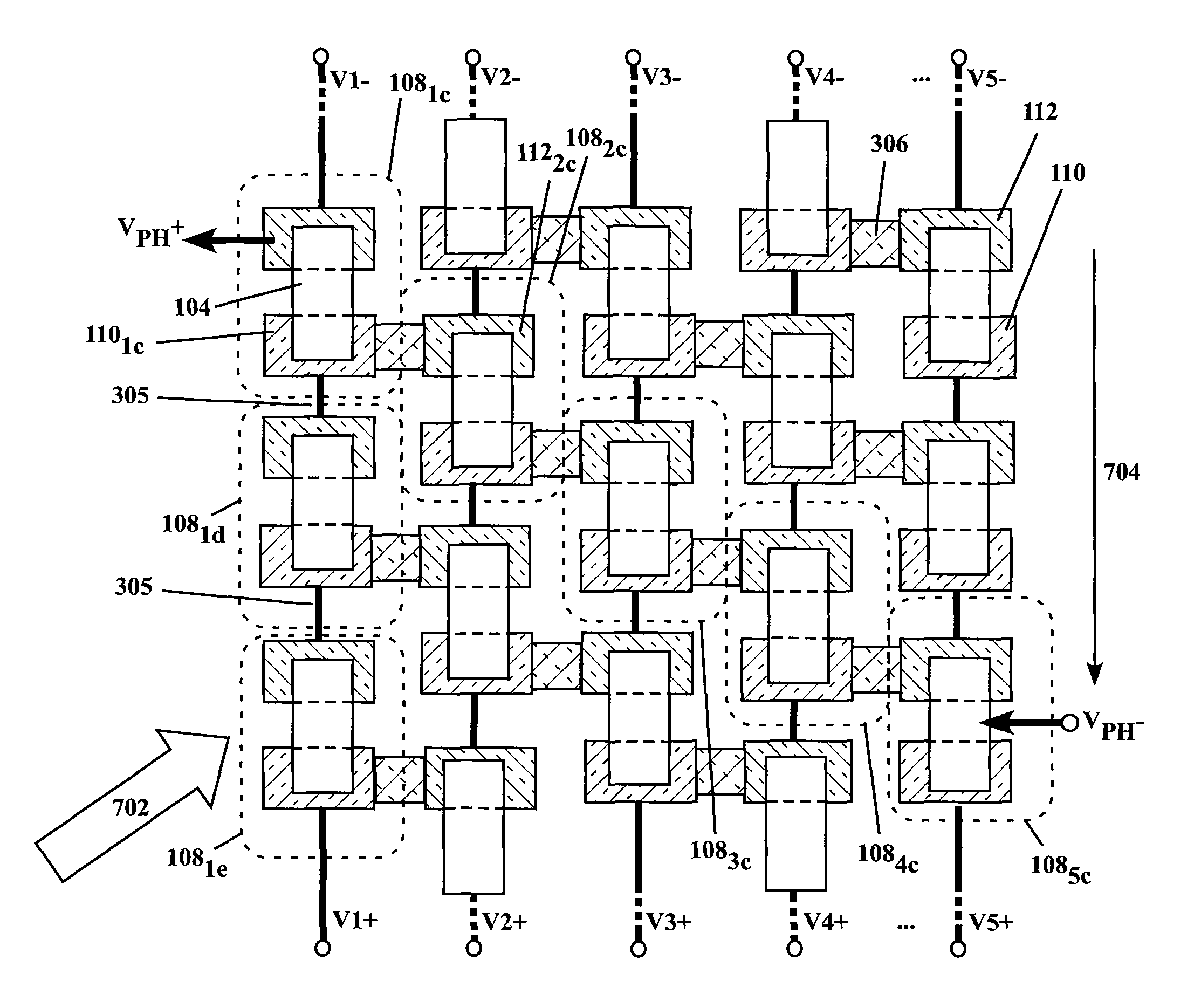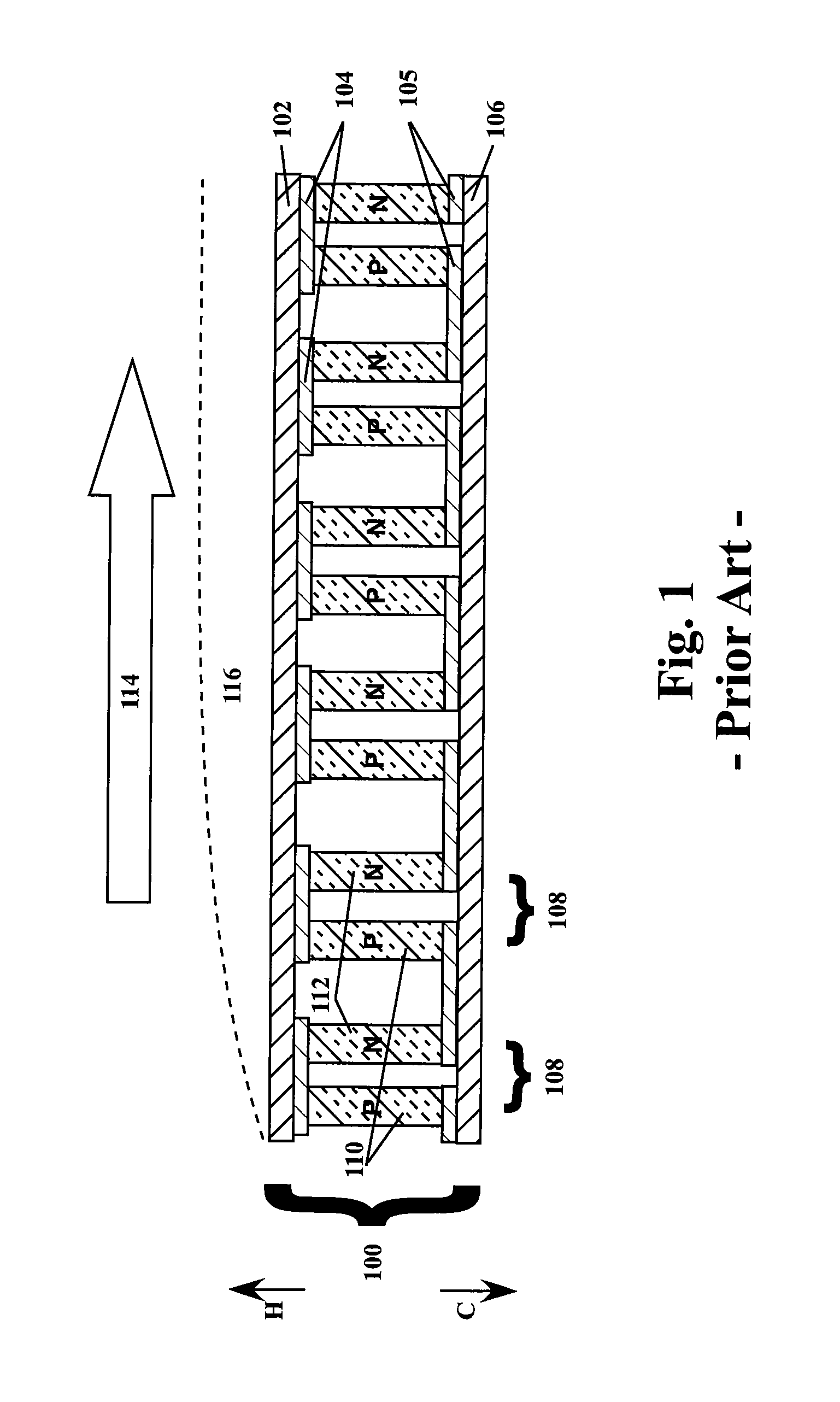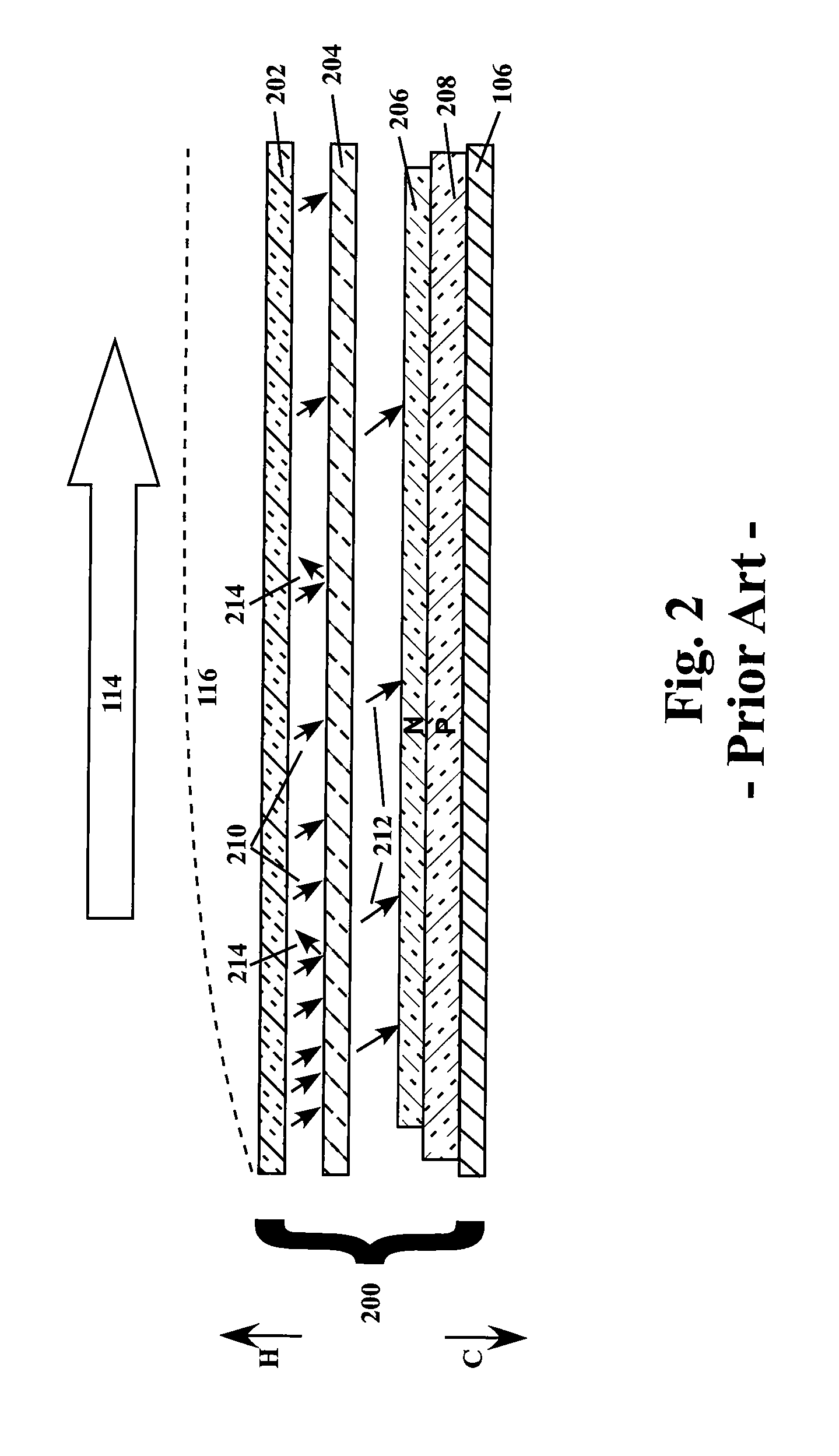Photon enhanced thermoelectric power generation
- Summary
- Abstract
- Description
- Claims
- Application Information
AI Technical Summary
Problems solved by technology
Method used
Image
Examples
Embodiment Construction
[0032]In the following description, numerous specific details are set forth to clearly describe various specific embodiments disclosed herein. One skilled in the art, however, will understand that the presently claimed invention may be practiced without all of the specific details discussed below. In other instances, well known features have not been described so as not to obscure the invention.
Prior Art Thermoelectric Generation
[0033]FIG. 1 shows an example of a prior art electricity generator using the thermoelectric effect. The thermoelectric (TE) generator 100 could be composed of a heat exchanger 102 near the thermal source 114 (at the “hot end”150), another heat exchanger 106 located away from the thermal source 114 (at the “cold end”160), and thermoelectric pairs 108 located between the heat exchangers 102,106. The thermoelectric pairs 108 are composed of a P-type TE element 110 and an N-type TE element 112 each extending from a connection to the “hot end” heat exchanger 102 ...
PUM
 Login to View More
Login to View More Abstract
Description
Claims
Application Information
 Login to View More
Login to View More - R&D
- Intellectual Property
- Life Sciences
- Materials
- Tech Scout
- Unparalleled Data Quality
- Higher Quality Content
- 60% Fewer Hallucinations
Browse by: Latest US Patents, China's latest patents, Technical Efficacy Thesaurus, Application Domain, Technology Topic, Popular Technical Reports.
© 2025 PatSnap. All rights reserved.Legal|Privacy policy|Modern Slavery Act Transparency Statement|Sitemap|About US| Contact US: help@patsnap.com



